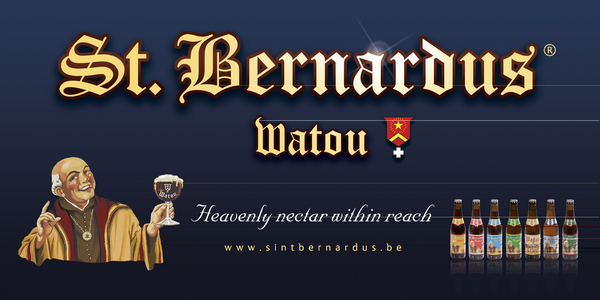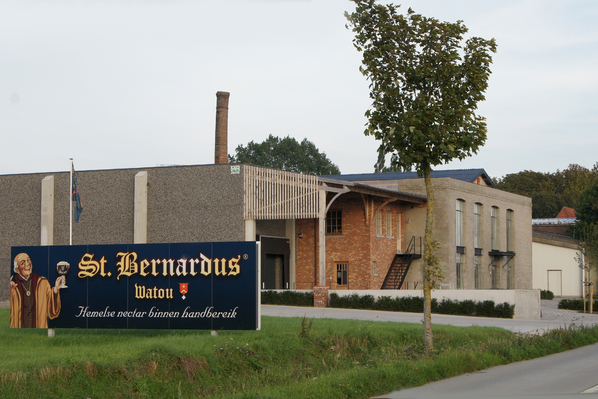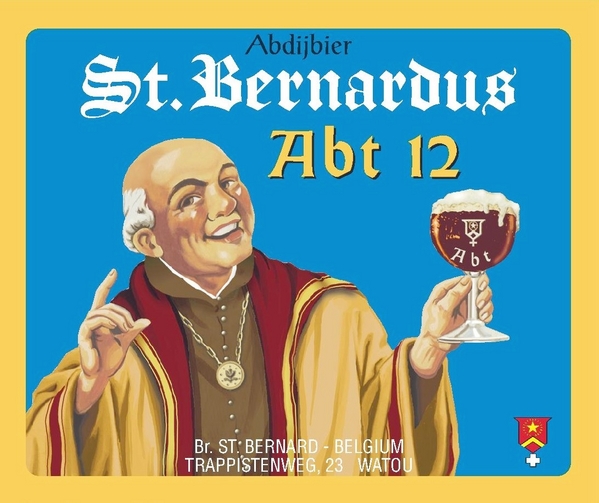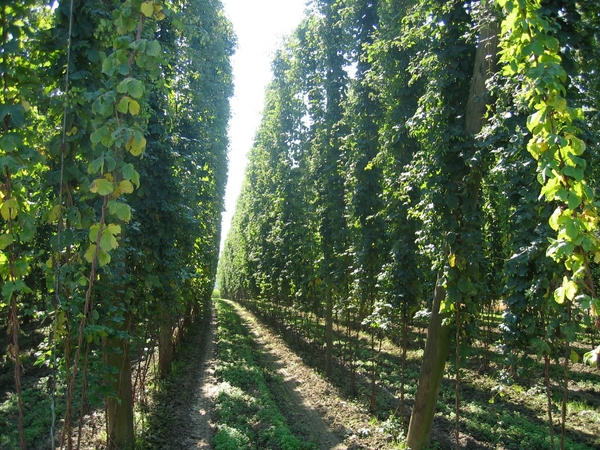Rich in history but Sint Bernard looks to the future for world sales of abbey beer
Added: Monday, July 28th 2014

The Sint Bernard brewery bridges one of the great divides in Belgian beer. Only the country’s six monastic breweries can call their beers “Trappist” while commercial interpretations of the monks’ ales have to be labelled “abbey”.
But Sint Bernard, in the village of Watou near Poperinge, not only has a logo of a smiling and quaffing monk but also uses an authentic Trappist yeast culture donated to them by the Abbey of Sint Sixtus in neighbouring Westvleteren.
Unravelling the complex story of the Sint Bernardus and Sint Sixtus beers requires a journey back into the tangled political and religious struggles of Flanders on both sides of the border between Belgium and France. During the turbulent and anti-clerical times of the French Revolution, Trappist monks at the Abbey of Mont des Cats in Godewaersvelde in French Flanders thought it would be safer to move over the border into the relative calm of the Low Countries.
They settled in Watou, just two kilometres from their home base, where they turned a farm into the Refuge of Notre Dame to Sint Bernard. In order to make a small amount of income, they produced cheese for commercial sale.
In 1934 the monks thought it was safe to return to Mont des Cats and sold the farm to Evanist Deconinck. He continued to make cheese but following World War Two he was approached by the monks at Westvleteren who asked him if he would brew beer commercially for them, using the Sint Sixtus name. The monks, keeping to the spirit of St Bendectine’s stricture to “work and pray”, shrank from the notion of becoming too commercial.

They would continue to brew beer for their own consumption and for their on-site café, De Vrede – In Peace. The brewmaster from the abbey, Mathieu Szafranski, of Polish origin, became a partner in the new brewery, called Sint Sixtus, and handed over his recipes and a sample of the yeast culture.
The commercial Sint Sixtus beers appeared in 1946 and the project was sufficiently successful for Deconinck to sell his cheese company. Even the name of the street where St Bernard brews is called Trappistenweg, clearly cementing the relationship with Westvleteren. The two breweries continued to work in harmony until the monks decided to end the licensing agreement in 1992. They had seen the success of the other Belgian Trappist breweries, Chimay and Westmalle in particular, and appreciated that the income from selling beer would help with the upkeep of their monastery and fund their work in the community.
The split was amicable. The commercial brewery changed its name to Sint Bernard but continued to use the Sint Sixtus recipes and the all-important yeast culture. The monks did ask Sint Bernard to remove the logo of a monk from the Watou beers but this has been honoured more in the breach than the observance: the cheery prior continues to quaff the full range of beers. But the beers are now clearly labelled as “abbey” products to avoid any suggestion they are produced by Trappists.

The Watou brewery uses water from a spring on the site, 450 feet deep. The hops, grown in a field next door (image below), are cut by hand, while barley comes from England and France. Brewing is fiercely traditional but major change is underway. A new brewhouse is planned and should be installed by the end of the year, which will enable Sint Bernard dramatically to increase production.
The brewery produces 33,000 hectolitres a year, with 200,000 bottles packaged every week. Beer is exported to 46 countries and is in ever-growing demand, from the United States in particular.
The current brewhouse is the original one from 1946 and uses the Belgian “farm house” style, with the mash tun doubling as the boiling copper. Following the mash, where the grain is mixed with water, the wort or sweet extract is filtered in a second vessel and then returns to the first one to be boiled with hops. A blend of pellets and hop extract is used.
Fermentation takes place in small conical vessels and lasts for a long 14 days. The beers are then conditioned for a further six to seven weeks. 80 per cent of production is packaged and the beers are re-fermented in bottle. When the new brewhouse is installed, the original kit will go on display in a museum on the site.
The long-standing beers, which replicate those brewed at Westvleteren, are labelled Pater 6, Prior 8 and Abt [abbot] 12. Tripel is a new beer, formulated at Sint Bernard and it has no connection to the St Sixtus beers. The brewery has brought back a lower strength beer called 4. Historically, 4 or “Enkel” (Single) was brewed in monasteries solely for consumption by the monks. Trials of 4 at Sint Benard have proved successful and the beer will be rolled out on a commercial basis.
The brewery no longer makes Grottenbier or Grotto Beer, a radical brew designed by the late Pierre Celis, founder of Hoegaarden. Grottenbier is stored in deep, cold cellars at a constant 12 degrees C, with a high moisture level of 95 per cent. The bottles are stored horizontally in racks known as pupitres and turned or “riddled” every day. Unlike Champagne, the yeast is not removed. When fermentation and conditioning are complete, the bottles are re-sealed with corks and wire cradles, and will age thanks to the remaining yeast. The beer is now brewed by the new De Kazematten brewery in Ieper and bottled by Sint Bernard.
Future plans at Watou include ageing a proportion of Abt 12 in oak casks for six months – a pleasure to look forward to.
Unlike the Sint Sixtus monastery and brewery, which are locked and bolted against the outside world, with beer sold once or twice or year to visitors, Sint Bernard welcomes tourists. Part of the tour includes viewing a short film about the brewery and a tasting of the beers in a spacious reception room on the first floor.
From the windows, in full view a kilometre or two away, is the Abbey of Mont des Cats, in a different country with a different language. It’s where the story of Sint Bernardus beers begins and the monks pay homage to that history with their own beer, introduced in 2012. Mont des Cats Bière Trappiste is brewed for them by the monks at Chimay but the French brothers hope in time to install their own brewery and widen the horizons and appreciation of monastic beers.
*Tours of Sint Bernardus are for parties of 15 people or more and cost 12.50 euro per person. Tours include a film, tasting, tour of the brewery and a pack containing a bottle each of 6, 8, 12 and Triple with a branded glass. www.sintbernardus.be; [email protected]; +32 57 38 80 21.
Brouwerij Sint Bernard, 23 Trappistenweg, 8978 Watou, Poperinge.





